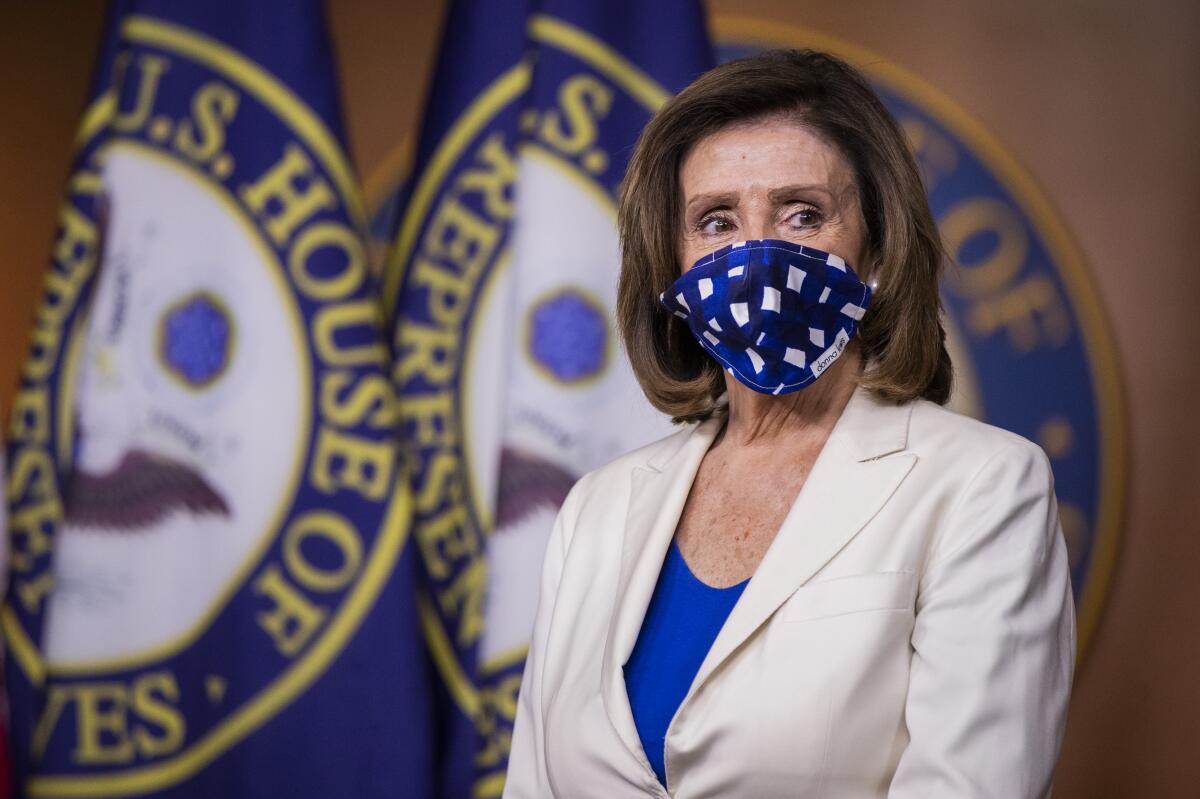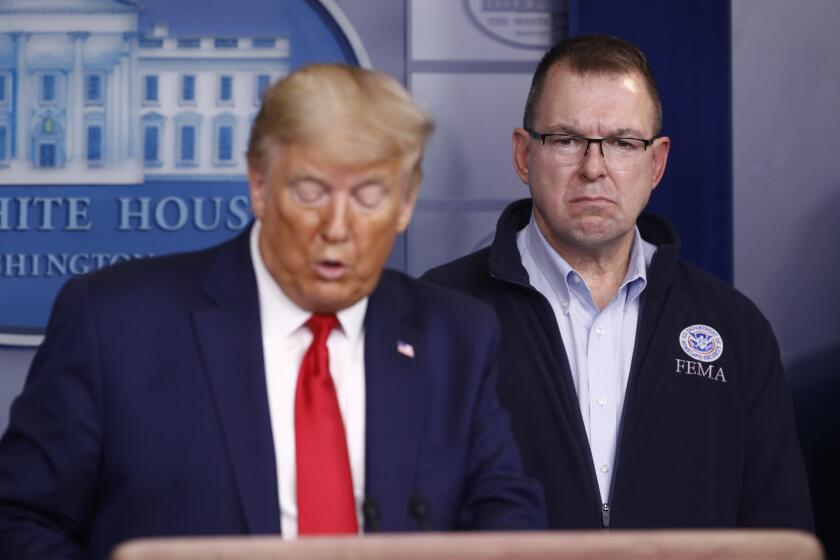Congress mirrors a divided America on reopening amid coronavirus crisis

- Share via
WASHINGTON — For a moment this spring, Congress rose to meet the challenge of a national emergency and passed four economic rescue bills in less than two months. Somehow, it seemed, the coronavirus had revived the art of bipartisan deal-making.
Those halcyon days are already over.
After a prolonged recess, the Republican-led Senate will return to session Monday, but the Democratic-led House won’t meet for another week. At this point, the two chambers can’t even agree when it’s safe to go back to work.
FEMA won’t release state-by-state information on where masks, gowns and other protective equipment have been delivered.
Senate Majority Leader Mitch McConnell (R-Ky.) has summoned senators to the Capitol over loud protests from Democrats who complain that he’s violating Trump administration health guidelines.
They’re right. Washington and its suburbs remain under medical lockdown. Confirmed infections and deaths from COVID-19 are still rising, which means it’s not yet prudent to summon many of Congress’ roughly 20,000 employees — never mind its members — back to the Capitol.
McConnell says the Senate should meet because health workers are risking their lives. But his agenda this week won’t focus on the pandemic; it’s about confirming federal judges, a longtime GOP priority.
“My motto for the year is: ‘Leave no vacancy behind,’” he bragged in a radio interview last week.
Democrats were furious, beginning with Sen. Dianne Feinstein of California, the Senate’s oldest member at 86.
“Bringing 100 Senators from around the country, including many coronavirus hotspots,” back to the Capitol “risks all of us,” she wrote in a blistering letter to McConnell. “It also sends the wrong message to the American people.”
But McConnell, who is 78, was unmoved, so Feinstein is flying back to Washington from San Francisco by private jet.
It’s not clear what precautions will be taken when the Senate convenes.
The Capitol physician, Dr. Brian P. Monahan, a Navy oncologist, has encouraged members to wear masks, but he cannot order them to. Nearly two months after President Trump claimed that “anybody that wants a test can get a test,” Monahan says he doesn’t have equipment to test all 100 senators in less than two days.
Unlike the White House guards, the Capitol Police do not subject visitors to temperature checks.
The same Capitol physician advised House Speaker Nancy Pelosi (D-San Francisco) that it would be a bad idea to reconvene her 430 members and their staffs, and she extended their recess until May 11.
Trump quickly weaponized Pelosi’s decision. “I think they should be back here,” he said of the Democrats. “They’re enjoying their vacation.”
The battle wasn’t just over the calendar; it was about the message each party wants to send during a national crisis.
For Trump and the GOP, the message is: It’s time to reopen the economy, and senators can prove it by going to work — even though two-thirds are older than 60, the age at which the Centers for Disease Control and Prevention advises people to stay at home.
For Pelosi and the Democrats, the message is: We haven’t turned the corner yet. Despite what the president says, you can’t talk your way out of a pandemic.
The result is a split-screen Congress, one side in face masks, the other often without. And it’s going to get worse from here.
Although Congress has approved $2.8 trillion in emergency spending since mid-March, both parties agree more is needed. But they don’t agree on what it should include.
“The next package is going to be more challenging,” Rep. Jim McGovern (D-Mass.), chairman of the House Rules Committee, told me. “There aren’t going to be as many kumbaya moments.”
Democrats want to go big — $1 trillion more — including help for hard-hit state and local governments. They want extended unemployment insurance, because they expect the economic downturn to last. They want an expanded food stamps program for families struggling to put food on the table. And they want to help states conduct the November election by mail, in case COVID-19 makes polling places unsafe.
McConnell initially opposed aid to state governments as “blue state bailouts,” but relented after GOP governors said they would soon need help, too.
The Senate leader is dead set against spending federal money to make it easier to vote by mail. Pelosi says that’s one of her top priorities. That’s a recipe for gridlock.
There’s even a partisan divide over an issue that ought to be easy: allowing members of Congress to work from home.
McGovern proposed several technological innovations, but ran into qualms from traditionalists and technophobes in both parties. (“We have members who still use flip phones,” he noted.)
But the resistance has been especially stiff from GOP leaders.
“They’d be quite happy if the House can’t pass legislation or conduct oversight,” said Norman Ornstein, a congressional scholar at the American Enterprise Institute, a Washington think tank.
Around the country, some governors are moving to reopen beaches and businesses while others are extending lockdown orders. Polls show a partisan split in public opinion, with most Democrats worrying that the Trump administration is moving too fast, and about half of Republicans — including many of Trump’s most zealous supporters — demanding an early end to the restrictions.
We’re a nation that ought to be united, but can’t resist the temptation to divide. Like it or not, Congress — half-open, half-shut; some in masks, some not — is a mirror of our fractious country.
More to Read
Get the L.A. Times Politics newsletter
Deeply reported insights into legislation, politics and policy from Sacramento, Washington and beyond. In your inbox twice per week.
You may occasionally receive promotional content from the Los Angeles Times.












